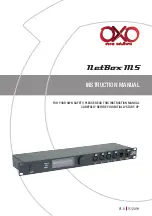
46
•
Xtium2-CLHS PX8 Reference
Xtium2-CLHS PX8 User's Manual
Synchronization Signals for a 10 Line Virtual Frame
The following timing diagram shows an example of grabbing 10 image lines from a line scan
camera and the use of a virtual frame trigger to define when a video line is stored at the beginning
of the virtual frame buffer.
In this example, virtual frame trigger control is configured for rising edge trigger.
Camera control signals are active at all times. These continually trigger the camera acquisition
in order to avoid corrupted video lines at the beginning of a virtual frame.
The camera control signals are either timing controls on Xtium2-CLHS PX8 shaft encoder inputs,
or line triggers generated internally by the Xtium2-CLHS PX8.
The following timing diagram shows the relationship between External Frame Trigger input,
External Shaft Encoder input (one phase used with the second terminated), and camera control
output to the camera.
LVAL
Notes: • In this example -- 10 lines are acquired
• The Maximum frame rate = Max. Line Rate / nb lines (Hz)
• In / Out signal reference is relative to frame grabber
Video Line
Camera
Control
Shaft Encoder
Virtual Frame
Trigger
In
In
In
In
Out
10 Lines
Acquired
n
Lines
Ignored
Figure 12: Synchronization Signals for a 10 Line Virtual Frame
Synchronization Signals for Fixed Frame Length Acquisition
A trigger event is only generated when a grab is active; when not grabbing no trigger events are
generated. When a frame is complete, the frame grabber checks for the specified active trigger
level and, if present, grabs the next frame; otherwise, it waits for the next detected active trigger
level.
In the following diagrams:
“T” indicates a valid external trigger event (SapAcquisition::EventExternalTrigger).
“Ignored” is an ignored event (SapAcquisition::EventExternalTriggerIgnored).
such that
I T = total triggers received by frame grabber
















































